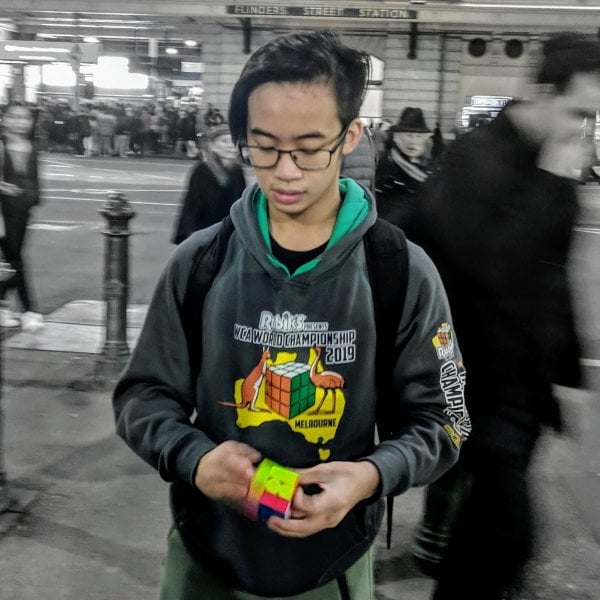Looking to further improve your solving times of the 3x3 Rubik's cube after having read our sub 1 minute guide? Here's our guide on how to become sub 45 seconds on the 3x3 Rubik's cube.
Don't know how to solve the Rubik's cube yet? Check out our beginner's 3x3 guide.
This guide assumes that you are familiar with the cube, its pieces and standard cubing notation.
Advanced Method - Tips for CFOP
Last Layer Algorithms
In order to get faster at solving the last layer, learning some forms of algorithms to solve specific cases is one of the easiest ways to get faster. The beginners method's last layer is extremely inefficient, requiring a lot of moves to solve even the simplest of cases.
The standard last layer method is done in two steps
- Orientation of the Last Layer (OLL) - Puts all of the yellow/top face color on top. There is a total of x amount of OLL algorithms
- Permutation of the Last Layer (PLL) - Permutes (rearranges) all the pieces in the last layer, leading to a solved cube. There is a total of y amount of PLL algorithms.
Beginners or intermediate solvers may opt to split this into four steps, known as 4 Look Last Layer or 4LLL, which requires fewer algorithms than "full" last layer, but is slower due to the extra steps. However, this is still much faster than the traditionally taught beginners method last layer.
For a full list of OLL and PLL algorithms, click here.
The steps for 4 look last layer are
- Orient Edges of last layer
- Orient Corners
- Permute Corners
- Permute Edges
For a full list of algorithms, check out J Perm's 2 Look OLL and 2 Look PLL algorithm list.
First Two Layer Optimisation
Arguably the most important, getting faster at solving the first two layers is key to becoming a fast CFOP speedsolver.
Cross
- The orientation of the cube and the fingertricks that you use are very important when trying to improve your cross solving speed. Try to orient the cube where you are able to use simple fingertricks to solve the cross, e.g. place an unsolve red edge on the right face, so you can use the right hand to do an R2
- Using a stackmat timer is a must for proper competition emulation, as the time it takes to pick up (and put down) the cube is counted towards your total time. With this in mind, this may affect your cross solutions as how you pick up the cube will determine what position your hands are in.
- Watching example cross solutions is a good way to pick up new cross solving techniques
- When solving, use other cross pieces to influence unsolved pieces into easier positions to solve
First Two Layers (F2L)
- Instead of solving the first, then the second layer, solve both layers at once by creating "pairs" then inserting them into the four "slots" in the first two layers
- Find efficient solutions by trying new methods to solve pairs, and when you can't find any efficient solution, look up solutions
- Watching example solves will give you new ways to solve first two layers, further improving your solve times
We recommend checking out these videos from J Perm on F2L and Cross videos.
Following these videos, and with adequate practice, you should be able to break the sub 45 barrier easily!










